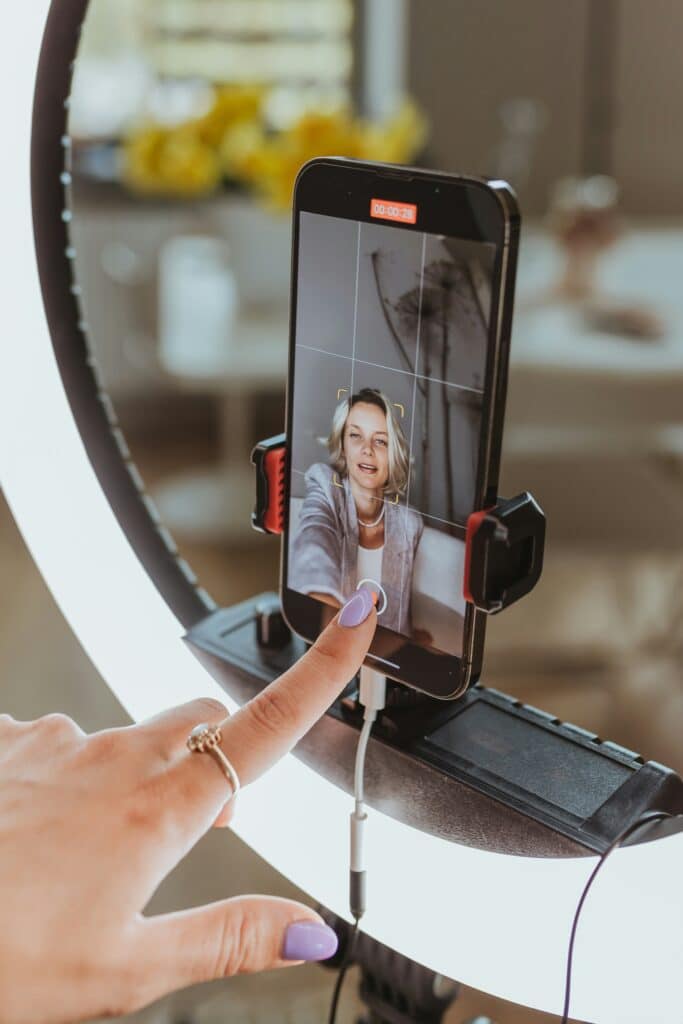Your Complete Guide to Understanding Two Distinct Creator Economy Roles
Introduction
In today’s digital marketing landscape, there’s often confusion between UGC creators and influencers. While both play crucial roles in brand marketing strategies, they serve distinctly different purposes and operate under different models. As brands increasingly allocate budgets to creator-driven content, understanding these differences has become essential for marketers and aspiring content creators alike.
Whether you’re a brand looking to expand your marketing efforts or a creator exploring monetization opportunities, this comprehensive guide will help you understand the key distinctions between UGC creators and influencers, and how each can contribute to marketing success.
What is a UGC Creator?
UGC (User Generated Content) creators are professionals who specialize in creating authentic, brand-specific content that appears to be generated by everyday users. Unlike traditional influencers, UGC creators focus on producing content for brands to use on their own channels, rather than sharing it with a personal following.

The role of a UGC creator is multifaceted. They work primarily behind the scenes, creating content specifically for brand use without requiring a large personal following. Their focus remains on producing authentic, relatable content that resonates with the brand’s target audience. Rather than sharing content on their personal accounts, UGC creators typically transfer full usage rights to the brands they work with. Compensation is usually structured on a per-piece basis, allowing for flexible working relationships with multiple brands.
What is an Influencer?
Influencers are content creators who have built a dedicated following around specific topics or niches. They leverage their audience’s trust to promote products and services, often integrating brand partnerships into their personal content style.
The influencer’s role centers around building and maintaining an engaged audience while sharing content on their personal channels. They must focus continuously on personal brand development and create content that aligns with their established niche. Their compensation typically correlates with their reach and engagement rates, and they must maintain a consistent posting schedule to keep their audience engaged and growing.
Key Differences Between UGC Creators and Influencers
1. Audience Requirements
The audience requirements for these two roles differ significantly. UGC creators can thrive without any minimum follower count, as their success hinges primarily on their content quality and creation skills. They can focus entirely on perfecting their craft without the pressure of building a following.
In contrast, influencers must cultivate and maintain a substantial following to succeed. Their value proposition to brands directly correlates with their audience size and engagement rates. They must consistently work to grow their following while maintaining strong engagement metrics to remain competitive in the influencer marketplace.
2. Content Usage
Content usage patterns vary distinctly between these roles. UGC creators produce content that becomes fully owned by the brands they work with. Their work typically appears on brand marketing channels and can be repurposed for various advertising campaigns. The focus remains squarely on product demonstration and highlighting key features in an authentic way.
Influencers, however, maintain more control over their content, sharing it primarily on their personal channels. They must skillfully integrate sponsored content with their regular posts while maintaining their unique style and voice. Their content typically emphasizes lifestyle integration and personal experience with products rather than pure demonstration.

3. Compensation Models
The financial structures for these roles follow different patterns. UGC creators typically work on a project basis, receiving payment per deliverable. Their rates vary based on content type and usage rights, with typical ranges from $100 to $500 or more per piece. This model allows for consistent income through multiple short-term projects.
Influencers generally earn through campaign-based work or ongoing partnerships. Their compensation reflects their reach and engagement metrics, potentially ranging from hundreds to thousands of dollars per post. Long-term brand partnerships often form a significant part of their income strategy.
4. Creative Control
Creative control varies significantly between these roles. UGC creators typically work within more structured parameters, following detailed brand guidelines and briefs. While this may limit creative freedom, it ensures consistency with brand messaging and style. They must excel at creating authentic-feeling content while adhering to specific brand requirements.
Influencers enjoy greater creative freedom, maintaining their personal style while integrating sponsored content. They must balance brand requirements with their established voice and aesthetic, creating content that feels natural to their audience while meeting brand objectives.
Benefits for Brands
When working with UGC creators, brands gain access to cost-effective content creation with consistent messaging and full usage rights. The quick turnaround times and authentic product demonstrations make it easy to scale content production while maintaining quality. This approach provides brands with a steady stream of relatable, professional content for their marketing channels.
Influencer partnerships offer brands different advantages, primarily centered around accessing engaged audiences and leveraging social proof. These collaborations can drive brand awareness through trusted voices in specific communities, potentially leading to viral reach and authentic audience engagement. The third-party endorsement from established influencers can significantly impact brand credibility.
Getting Started in Either Role
The path to becoming a UGC creator begins with developing strong content creation skills and building a diverse portfolio. Aspiring UGC creators should focus on mastering basic photography and videography techniques, along with relevant editing software. Understanding brand guidelines and effective pitching strategies is crucial. Many successful UGC creators begin by joining specialized platforms that connect them with brands seeking content.
For those pursuing an influencer path, the journey starts with choosing a specific niche and consistently creating content that resonates with their target audience. Building an engaged following requires developing a unique personal brand and maintaining regular community engagement. Successful influencers often join networks and actively network with brands while nurturing their audience relationships.
Expert Tips for Success
For UGC creators, success often comes from focusing on creating high-quality, authentic content that genuinely resonates with the brand’s target audience. Learning to demonstrate products subtly while maintaining authenticity is a crucial skill. Building strong relationships with brands can lead to consistent work opportunities, while staying updated with platform-specific content trends ensures continued relevance.
Influencers should prioritize genuine audience engagement over raw follower numbers, maintaining authenticity in brand partnerships while creating value-driven content beyond sponsored posts. Building genuine connections with their community helps establish long-term success and credibility in their chosen niche.

Final Thoughts
Both UGC creators and influencers play valuable roles in modern digital marketing, but they serve different purposes and require different skill sets. Understanding these differences is crucial for both brands and creators to make informed decisions about their marketing strategies and career paths.
Whether you choose to become a UGC creator or an influencer, success depends on understanding your role’s unique requirements and delivering value to both brands and audiences. Consider your strengths, goals, and preferred working style when deciding which path to pursue.
Moving forward, focus on evaluating your current skills and interests while researching successful creators in both categories. Begin building your portfolio or following, depending on your chosen path, and make connections with brands that align with your goals. Joining relevant communities and staying informed about industry trends will help ensure your continued growth and success.
Remember, there’s no one-size-fits-all approach to content creation. The key is finding the role that best matches your skills, interests, and career goals while providing value to brands and audiences alike.

